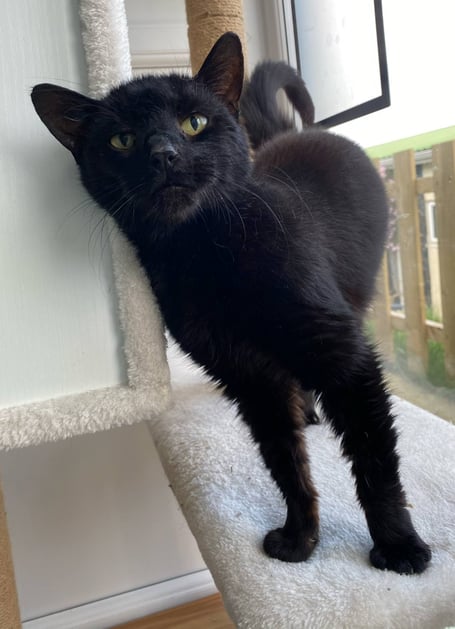Introducing a new cat to your home is a big deal, especially if you already have an existing cat or cats.
Here is how you can introduce everyone for a smoother and more peaceful transition that minimises stress for both you and your cats.
- Prepare a cozy room: before the new cat arrives , set up a quiet room with everything the cat needs such as a comfortable bed (ideally with bedding that the cat has already been using so that it smells familiar), a litter tray, and food and water bowls. These should be placed well away from the litter tray. This room will be the new cat’s safe space.
- Resources – because cats can be territorial and possessive, make sure they have a food bowl and litter tray each, and enough places to sleep. This way, each cat will have their own space and will not feel the need to compete.
- Scent – cats learn a lot about each other through smell, and you can help them get used to each other by swapping their scents. Use a soft brush to gently stroke one cat along the side of their face where the scent glands are located (just below the ear), and then use the same brush on the other cat. This mixes the scents and should help the cats feel more at ease with each other when they eventually meet, but stop if either cat appears anxious.
- Introductions – when your cats meet for the first time, be ready with treats and toys to distract them from any negative behaviour, and so that they associate each other with an activity they enjoy. Don’t leave them unattended until they appear comfortable around each other, and don’t force them to interact.
- Other pets – follow a similar, gradual introduction process, and make sure the new cat can always retreat back to their safe space.
Patience is key, and whilst some cats will eventually become good friends and sleep and play with each other, and enjoy mutual grooming (allogrooming), others will remain aloof and prefer their own company.
Hiding continuously, urinating in corners and over-grooming are signs that a cat is stressed, and if you observe these behaviours you should re-think the cat’s environment – do they have enough space to be independent of other cats; do they have somewhere to feel safe; and do you need to feed them away from other pets?
Oreo, a stunning 10-year-old black cat, is happy to live both with other cats and dogs. She came to us at the end of last month because her owners were moving house and couldn’t take her with them.
She is used to living in a rural environment near Andreas and she hasn’t got any experience of busy roads, and so these will be important factors in her choice of new home.
It is the MSPCA’s practice to rehome cats well away from where they have lived previously, usually a distance of no less than three miles, to prevent them returning to the wrong house.
Most cats have excellent natural instincts and navigation skills which enable them to return home even after roaming for miles. Whilst the homing instincts in other species are well researched, less is known about how cats navigate.
The most likely theory is that they combine olfactory cues and an ability to use the earth’s magnetic fields.
Oreo is very affectionate, although she can be a bit shy when she first meets people. She would suit a multi-pet family environment, but equally be suited to a quieter single person home.
She’s a low maintenance cat – she’s healthy and active, she’s not a fussy eater, and she doesn’t bite or scratch.
If you have any cattery queries please call the team on 851672, option two. You may need to leave a message on an answer machine, but please be patient. The team will call you back.




